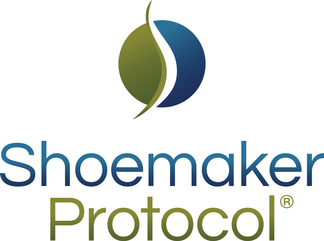Week of June13, 2023

1/ CSM guidelines
Question: What type of food and drinks can we take with cholestyramine to help those who have a hard time getting cholestyramine down?
Answer: The main thing to remember is that cholestyramine should not be taken with food as the food will be bound by cholestyramine. Any liquids can be used to assist “getting CSM down,” aid digestion, prevent reflux and help prevent constipation (often these symptoms naturally resolve within a few days). Mixing CSM with Gator-Ade and processing that mixture in a blender has helped a lot of people. Or try apple juice, cranberry juice, or dissolving CSM in luke warm water then adding ice helps reduce heartburn.
For years we have given cholestyramine mixed in applesauce to children but the cholestyramine will be bound to some of the particulates in the applesauce material. Similarly the dosing of CSM with ice cream reduces its efficacy understanding that no tolerance of CSM really knocks out its efficacy.
Some individuals will benefit from starting the CSM dosage slowly and building up to the full dosage over the course of a few weeks.
For those who are sensitive to any additives that may be in CSM, you may want to seek out a compounding pharmacy where you can get the raw, pure form of the medication (such as Woodland’s Compounding Pharmacy). https://www.twcprx.com/
For more information, you may be interested in the CSM learning module created by Dr. Shoemaker available for purchase.
2. Cholestyramine use without removal from exposure
QUESTION: I live in a house that has a water-damaged basement. I have initiated treatment with cholestyramine but every time I go in the basement I get worse. How long will it take to get better?
The first requirement in treatment of a chronic inflammatory response syndrome (CIRS) acquired following exposure to the interior environment of water-damaged buildings is removal from exposure. If you continue to be exposed, then you are adding an inflammatory burden for which you are asking cholestyramine to be adequate to help you.
All cholestyramine does is to bind to particular toxins and remove those from enterohepatic recirculation. Because these compounds are ionophores, cholestyramine will not remove all such compounds immediately. As such, the inflammatory process continues and indeed increases, despite use of cholestyramine.
Please assess the fungal burden in your basement and in the upstairs of your home as, don’t forget, the stack effect will create movement of bioaerosols upward in a home.
3/ How long is CSM commonly prescribed in the Shoemaker Protocol?
ANSWER: VCS will show typical deficit in 92% of patients. Once they’ve begun CSM or Welchol, if the patient is a case with normalizing VCS, you can still see interval improvement in the VCS, although going from 8 to 9 is a stretch. Follow labs and symptoms re the clinical time to stop CSM or switch to Welchol. If you are suggesting stopping meds, also verify that the ERMI or HERTSMI-2 in the home is safe.
You can check to see how your CSM treatment is working with the Surviving Mold VCS test and tracking system.
4/ Cholestyramine schedule
QUESTION: The usual directions in the package insert for use of CSM suggest taking the drug 2 hours after meals or 1 hour before. You have advocated taking the drug one hour after a meal or 30 minutes before 1 meal. Can you clarify the difference?
ANSWER: Having used cholestyramine now for approximately 17 years in treatment of biotoxin illnesses, we have yet to see any information confirming the need for the very long intervals advocated by the manufacturer for use of cholestyramine. Functionally requiring one hour before meals makes it essentially impossible to take the drug 4 times a day. We have not seen adverse effects or reduced benefit from using the medication on an empty stomach waiting only 30 minutes before swallowing food or other medication. Any
liquids, of course, are acceptable though colloidal liquids (such as milk) probably are not a good idea. Should you take your cholestyramine with Gatorade or tea, there would be no difference compared to taking cholestyramine with water. Similarly, unless there is gastroparesis, simply waiting 60 minutes after food has been ingested is satisfactory.
Note that I do have concerns about particular medications taken concomitantly with CSM in which an adequate dose must appear in the blood stream. These would include thyroid, theophylline, warfarin, digoxin and others. Discuss use of these medications (as well as others!) with your attending physician understanding that taking cholestyramine two hours before a dose of thyroid has not resulted in a rise in TSH levels to date
5/ CSM, heavy metals 01_17_14
QUESTION: Does cholestyramine bind persistent organic pollutants and heavy metals?
ANSWER: Cholestyramine binds a large series of organic molecules including DDT, DDE, PCB’s and kepone. It does not bind to heavy metals.
6/ Cholestyramine, use in re-exposure or prevention
QUESTION: What is the proper dose of cholestyramine to be used following unexpected re-exposure?
ANSWER: If a previously affected patient goes into a new building and sees evidence of water intrusion and fungal growth, the patient should vacate immediately. I routinely recommend that people keep Welchol with them in the glove compartment of their vehicle so that they can use something for treatment on an urgent basis. If only cholestyramine is available, please initiate one scoop of cholestyramine taken four times a day for at least three days, and usually one week, to assist in prevention of reacquisition of illness.
Should there be persistent symptoms, I would recommend that the visual contrast sensitivity test (VCS) be performed as well as measurement of C4a and TGF beta-1.